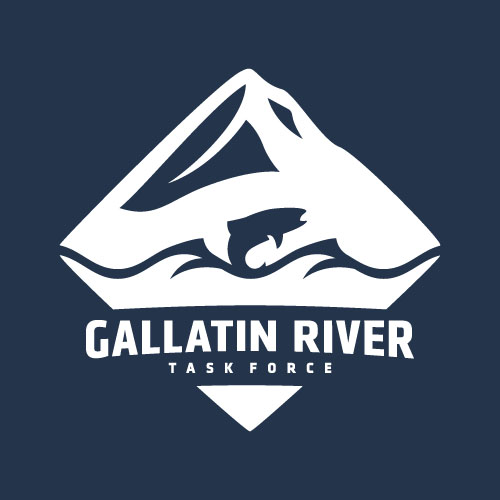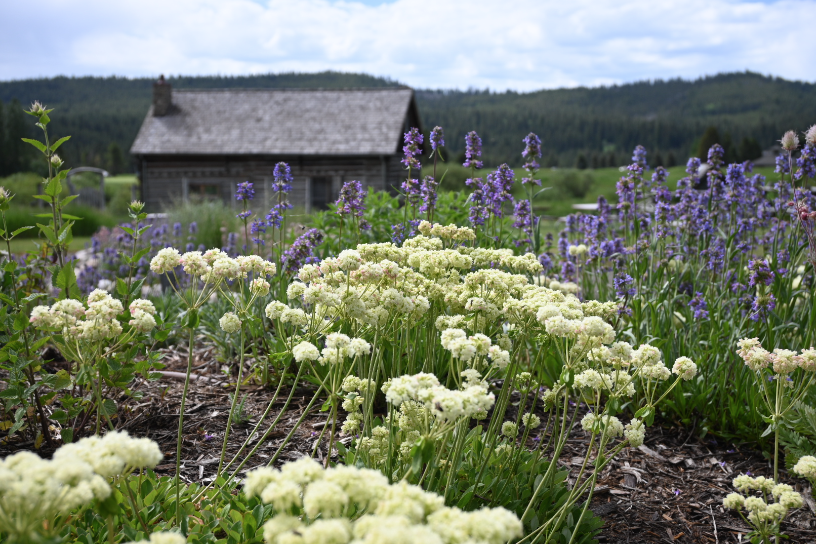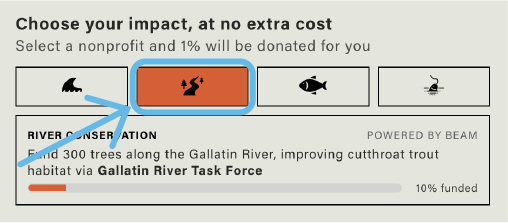Having a landscape that works with a nuanced climate is not an easy task. Terms like drought prone, fire prone, noxious, resilient, water-wise and so forth are tossed around in conversations focused on changing the way we plan for and mitigate the effects of our community climate—and our behaviors—on our water resources.
It is important to understand that how we use community water for our landscaping affects not only our groundwater but also our natural resources and eventually our river and tributaries; learning and understanding this requires a shift in behavior and putting appropriate practices in place.
In Big Sky, our community climate undoubtedly influences our landscapes, and our landscaping in turn influences our community water supply. In an average year, summer water use accounts for seven to eight times more total water use than winter, even though winter sees far higher visitation. Most of this use can be attributed to how we use water to irrigate our lawns, our green spaces, and our community landscaping. Landscaping can have an enormous impact on water quality and quantity, and how we design and manage our landscapes for our unique climate can benefit the environment just as easily as it can deplete our resources.
Considerations for water quality, wildlife, drought, fire and defensible spaces, and the proliferation of noxious weeds are all at play in and around Big Sky’s community properties, both public and private. Choosing native landscaping saves a considerable amount of community water, allowing plants suited for this climate the opportunity to grow and survive, and eventually become established to the point that they require little to no supplemental irrigation to survive.
Because native plants have evolved in our semi-arid ecosystem, they do not need fertilization, and require only normal rainfall once established. They are the best choice for resilient landscapes, and are the “lazy gardeners’ dream,” according to our friends at Grow Wild Montana, experts in the field (literally) of the dos and don’ts for planting a sustainable and climate/fire/drought resistant and water-wise landscape.
Making these kinds of choices during the new construction of a home, or during a remodel, updating or redesigning a landscape can help build a more resilient community profile where our vegetation and our water resources survive in drought and fire-prone seasons. If you are building, consider best practices into a new design that take into account native plants and lawns that require less water and less maintenance.
Take advantage of the Big Sky Water Conservation resources and rebates for assistance in new and efficient irrigation methods, and choose a small area of an existing lawn to implement better growing techniques and automated landscape technologies that can help you achieve a more sustainable landscape for less time and less money.
In the past, the Gallatin River Task Force has worked with the community to implement what had been called a “Trout-Friendly Landscape Certification Program.”. That program is currently shifting into an expanded, community partnership-based program focused on building more resilient landscapes on a broad scale throughout Big Sky. This Big Sky community landscaping partnership will engage local and regional partners to create easy-to-follow landscaping guidelines that prioritize native species, manage invasive species, and focus on water conservation, increased drought resistance, and a reduction in wildfire risk.
This partnership will combine the talent and capacity of the Task Force, Grow Wild (formerly Gallatin Invasive Species Alliance), Big Sky SNO, and the Big Sky Fire Department, creating a collaborative program that will make it easier for property owners and businesses to find information and integrate all of the recommendations for a Big Sky-appropriate landscape.
In addition, the partnership will allow the participating organizations the ability to build capacity, align messaging and expand education and outreach opportunities. It’s a community win-win-win for resilient landscapes and sustainable use of our shared water resources.
Saving water in your landscape is a small way you can make a big difference for the Gallatin River. Using water more efficiently by incorporating better native landscape elements and improved irrigation practices is a critical piece in keeping the Gallatin flowing cold and healthy for the future. Utilizing the expertise and resources of our community partners is the best way to create a resilient environment that is drought and fire aware, and more suited to management of our ever-changing climate. Let’s do it #FortheRiver.




